Finding the Balance: The Synergy of Nuance, Critical Thinking, and Ahavat Yisrael
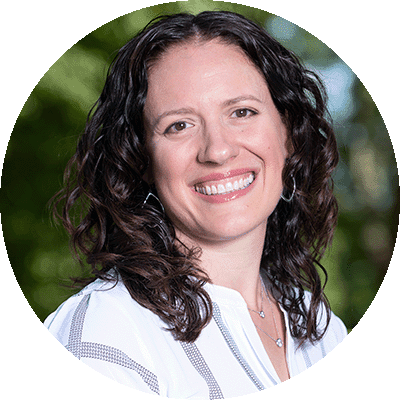
Rena Sichel Rosen is the Middle School Assistant Principal at the Leffell School (Hartsdale, NY), where she teaches Zionism and Modern Israeli History and leads Derech l’Lev, the Eighth-Grade Israel Experience. Ms. Rosen holds a BA from the University of Pennsylvania and an MS in Historic Preservation from Columbia University. She is a candidate for an MA in The iCenter Graduate Program in Israel Education at The George Washington University.
We get off the bus for a quick stop on our first day of Derech l’Lev, our 8th-grade Israel experience. There is an electric energy as our two busloads of students and chaperones embark on this much-anticipated, two-week journey to Israel. I turn to one of my students: “So Sarah, what do you think? What are your first impressions of Israel?” Her face lights up. “I can’t explain it,” she says. “It’s all so familiar even though it’s my first time here. I just feel like I belong, like I’m home. I love this country!”
This unadulterated feeling of belonging, this pure ahavat Yisrael is something we try to engender in our students from their earliest years in our school. It is one of our core values—fostering a connection with Israel and recognizing its centrality to Jewish identity. But this love and connection is not a simplistic one. Sarah’s reaction when we arrived in Israel, this pure, wide-eyed love of Israel was not absent of her understanding of complexity. Just a few weeks earlier, Sarah, an earnest and passionate student, was asking hard questions and delving into challenging material in my classroom. Some educators fear that by exposing students to the more challenging moments in Israel’s history before they are ready, we will weaken their connection, their Zionism, or their support of the State of Israel.
However, we know how important it is to teach nuance and complexity. Israel at 76 is different from Israel at 20, or 35, or 50. As Israel matures, its place in the world, and in the estimation of world Jewry necessarily changes. Our students will be confronted later in life with uncomfortable historical facts about Israel. And as Alex Pomson, et. al., found in their 2018 study Devoted, Disengaged, Disillusioned, students are more likely to remain deeply committed to Israel while also internalizing Israel’s imperfection if they learn these uncomfortable truths in the safe space of a day school education. It is essential to raise our learners with an honest, thorough, and nuanced exploration of Israel’s history in order to create a deep understanding of our homeland.
If Sarah’s enthusiasm, passion, and joy throughout our time in Israel is any indication, her love of Israel was not only not diminished, it was enhanced by her nuanced understanding of challenging issues. We seem to have struck a balance, instilling in our students deep and unwavering ahavat Yisrael while also providing them with an honest, nuanced, complex understanding of Israel and its imperfect history.
How did we get there? Our carefully crafted, multi-faceted approach was a combination of middle school social-emotional learning, specifically formulated pedagogy around classroom instruction, and the immersive experiential education that occurs on our capstone 8th grade Israel trip.
Conflict, drama, and interpersonal issues have long been hallmarks of the middle school experience of many students. Middle school guidance counselors spend much of their time guiding students through relationships and interactions with peers. For many students, middle school is a time to strengthen their ability to navigate these challenges and develop skills to do so. Two emerging skills in particular—considering the perspectives of others and building resilience—are key social-emotional themes that are particularly relevant to Israel education.
Fostering the skill of understanding the perspective of others leads students like Sarah to approach conflict with authentic curiosity. They are learning to ask questions about how another person’s narrative might differ from their own. And all the more so, they are beginning to internalize the idea that understanding and empathizing with another narrative does not diminish their conviction in their own understanding of events.
Through the lens of teaching these skills, middle school is the ideal time to guide students through nuanced relationships that allow them to embrace their own narrative while fully understanding and having empathy for the experience of others. This lesson could not be more relevant to understanding our relationship with Israel.
Resilience, an essential theme in the Jewish story, is another key skill that is developed during middle school. An emphasis on building resilience and grit instills confidence in our students as they grow to believe in their ability to thrive. In Israel education, an emphasis on the resilience of our people resonates deeply with middle school students as their developing identity includes a belief in their own strengths and abilities. Studies about the importance of grit and resilience abound, and we know that success is built on this perseverance. In my classroom, I’ve looked toward songs like Giborei Al (Hatikva 6) and Am Yisrael Chai (Eyal Golan) for their inspiring message and descriptions of the essential character of the Jewish people in general and Israeli society in particular.
Who teaches, how they teach, and what they teach are all important factors in effective education. This holds true, of course, when teaching Israel.
Our approach to Israel education is based on a partnership between a content specialist and a master teacher. As with any subject, delivery is so important, so it is not enough to know the information, but knowledge of how best to convey it in a specific context to a specific audience is essential. Embedded in this is the understanding that thoughtful organization and presentation of material are essential for guiding students as they navigate complex subjects.
Approaching Israel education with a social studies framework sets the stage for an environment of reflection, inquiry, and discourse. Students approach historical circumstances with a problem-solving mentality. Central to social studies education is the assumption that there is rarely a single or “correct” solution to political or social problems, and decisions need to be made by understanding and analyzing multiple imperfect solutions. This is a paradigm particularly apt for teaching historical topics like Israel which are laden with multiple conflicting narratives and perspectives.
Take, for example, the teaching of halutzim and kibbutzim of the early 20th century. It would be easy to adopt a binary narrative. Those who support the State of Israel might only focus on the work ethic of the Labor Zionists, the challenges they were able to overcome, and the building of a much-needed haven for the persecuted Jews of Europe. Others may look solely at the European settlement in a foreign land and view this activity within the context of colonization that forced indigenous people from their land.
Our approach to teaching this topic represents collection, evaluation, and analysis. In the realm of collection, facts are identified—What was the population of the land before the halutzim arrived? Why were the halutzim coming to Palestine, and what were their other options? How did Jews acquire the land that they went on to settle?
Evaluation becomes a natural outgrowth of the collection of data. Students exhibit intrinsic curiosity with their questions that help them evaluate the information they have gathered. They ask questions such as:
- How did the people who were living there feel when the Jews arrived?
- Why were the local people upset if the land was purchased legally?
- Why couldn’t the Jews find a place where no one else was living?
- How can we fault the Jewish pioneers for desiring safety, security, and self-determination?
Finally, the analysis comes in the form of informed conversations in the classroom. Students work out their opinions and beliefs as they debate and deliberate. Having conversations allows an individual to formulate her or his own thinking and clarify her or his views and beliefs. In the classroom, they practice the skill of separating fact from narrative, thinking critically, and articulating and empathizing with various viewpoints.
At several junctures in the curriculum, jigsaw-like activities or simulations of contentious conversations prove effective pedagogy to understand how various historical facts, documents, or ideas fit together. Having a group of students develop a depth of understanding of one ideology or one historical circumstance provides them with a thorough understanding of this one viewpoint, almost to the point that they adopt it themselves. The students are then challenged to interact with others who have developed the same depth of understanding of a different ideology or historical circumstance.
We might use this pedagogy to develop content knowledge about the various schools of Zionist thought, the different promises the British made to various groups during World War I or various visions of what it means to be a Jewish and democratic state. The resulting classroom conversations and critical thinking support the premise that these techniques elicit deep curiosity, content knowledge, and analytical ability.
This framework is extremely grounding for the teaching of Israel in a middle school classroom. In the course of establishing classroom norms and protocols, we emphasize the importance of being open-minded to various perspectives, some based on facts and others based on opinions. Students learn to distinguish between facts and opinions, between the past—the actual historical events—and history—the telling of these events. All of these different narratives serve as a body of knowledge, and each perspective is valid, and also a part of the whole understanding of an event.
An example from our curriculum is the shift we implemented in understanding the promises—and broken promises—that the British made to the Jews and the Arabs. Where previously we might have touched upon many of the different agreements and promises, the majority of time would be spent unpacking the Balfour Declaration. We would have looked at the language and how it impacted various constituents, and ultimately put tremendous stock in the promise made to the Jews by Lord Balfour.
In an effort to provide the information and have students unpack it themselves and inherently know the questions to ask, we shifted our approach. We now distribute several different documents and corresponding maps—the Hussein-McMahon correspondence, the Sykes-Picot agreement, the Balfour Declaration, and the Faisel-Weitzman agreement—one to each of several groups around the classroom. Each group carefully unpacks their document. Not until they are sharing their findings with the class do they discover that these documents directly contradict one another. This leads them to ask the questions from a place of authentic curiosity. Activities like this one engender in students an ability to engage as thoughtful, empathetic citizens with the ability to engage openly with a variety of —sometimes conflicting—ideas.
This nuanced learning comes to life during our two-week Israel experience. The students have become accustomed to looking for and appreciating ways in which conflicting stories overlap, interweave, and at times collide. Throughout the trip, we find that viewpoints and overlooks are great places to internalize this lesson, as they literally and metaphorically give students a birds-eye view. One of my favorite places to take students in the Old City of Jerusalem is the rooftop above the point where the quarters of the city meet. It is a place where we can viscerally experience coexistence—we hear the muezzin, the church bells, and the shuffling sounds of commerce below. We see Jews, Christians, and Muslims engaging in their daily life. And we can feel how the different communities and religions live together. Our classroom conversations preceding the trip prepare us to see these communities in conversation with one another. Jerusalem comes alive not only as OUR holy city but also with a multi-dimensional understanding and appreciation of its significance to so many others.
As our students grapple with all of these issues, they do so with a genuine curiosity and an absence of judgment. Our hope is that, as they emerge from middle school with developed social-emotional skills, conversation protocols, and a foundational understanding of Israel’s complex history, our students have the ability to confront complicated issues and engage in difficult conversations. And they do so with an unwavering love for and commitment to the State of Israel. In fact, their deep ahavat Yisrael seems to grow even stronger as they develop a nuanced and honest understanding of Israel’s strengths and weaknesses. As they encounter challenges beyond the walls of our school, there is no doubt in my mind that these students will be able to both hold empathy for the Palestinian story and maintain a deep and unwavering sense of ahavat Yisrael.

Rena Sichel Rosen is the Middle School Assistant Principal at the Leffell School (Hartsdale, NY), where she teaches Zionism and Modern Israeli History and leads Derech l’Lev, the Eighth Grade Israel Experience. Ms. Rosen holds a BA from the University of Pennsylvania and an MS in Historic Preservation from Columbia University. She is a candidate for an MA in The iCenter Graduate Program in Israel Education at The George Washington University.

FROM THE EDITOR: Fall 2024
It feels pretentious and premature to be talking about retooling education about Israel. The war is not over, the wounds are still fresh, barely a year has passed since that awful day, there are thousands of children-parents-loved ones still in active combat and separated from their families for months at a time, many of the hostages are still in captivity, the campuses are reeling, the internal divisions in Israel are deepening rather than abating, and the landscape of the Jewish world is muddled at best as the aftershocks of the earthquake still rattle us. And yet, we dare to think that we have something meaningful to contribute as to how to teach about Israel. It is fair to say that everything written in this journal is written with the awareness that when the dust settles, we may need to re-examine everything all over again.

The Story of the Ever-Living People
As a preface, I believe that we are all experiencing a revolutionary moment in the evolution of the Jewish people. By that, I mean that while the evolution of the Jewish people remains a constant, we are nonetheless at the forefront of a moment of awareness—of what in Judaism is known as she’at ratzon—a moment of willingness among Jews that is unprecedented in modern Jewish history. That, in and of itself, should raise for us a great call for action as educators and as people who work on behalf of the Jewish community in charting a path for our envisioned trajectory.

Knowledge and Identity: An Interview with Natan Kapustin
I would identify two very different kinds of Israel education that we do. The one that I will not speak about much is what I might call the reactive component. When things happen in or related to Israel, we need to address them. And we do that in a variety of ways. We have speakers come in, debriefing sessions with our students, Town Halls dedicated to open discussions about Israel, special tefillot, etc. This past year, post-October 7th, we were particularly intense in the reactive programming, and it is hard to know what this next year will bring. But none of this has affected what we have been doing in our core Israel education programming.

The Times They Are A’changin…
When I began my work in Jewish education at the Park Avenue Synagogue High School in September of 1967 it was, as some will remember, a tumultuous time. In the Jewish world, the Six-Day War gave a sense of elation (albeit very temporary as we have seen for many decades) and America was filled with social and political crises. Our afterschool and weekend program quickly became a magnet for Jewish and even non-Jewish teenagers from across the Upper East and West sides of Manhattan. Feeling the absence of the “international” (Jewish and beyond) in my own education and seeking to emphasize and expand it in that of my students, we quickly added international travel during summer and mid-year vacations as a key part of our curriculum, and within a decade we were traveling into the Arab world.
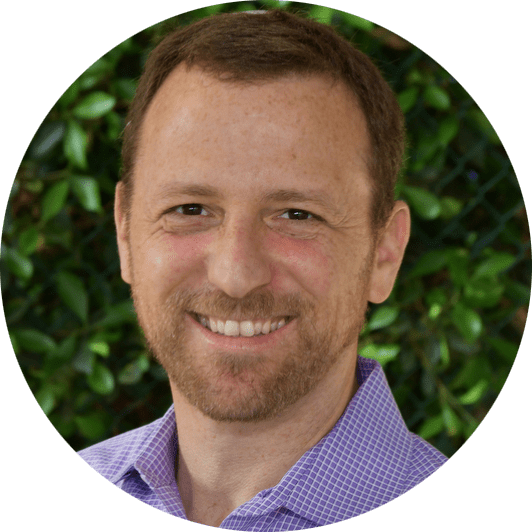
Developing Students’ Capacity to Engage in Productive Dialog about Israel
In April 2023, David Bryfman and Barry Chazan wrote: “Today the issues of identity and Jewish identity not only have lots to do with Israel, but also the connection between Israel and Jewish identity may be one of the most significant developments for Jewish identity, life, and education that we have known.” In other words, Jewish identity is intertwined with Israel in ways that have never before been true. This sentiment and understanding have shaped and guided our school’s recent thinking about Israel education.

Israel Front and Center: Developing a Curriculum on Am and Medinat Yisrael
Sitting in my 12th grade Modern Israel class, one of my students raised her hand and asked “why haven’t we learned anything about Israel in History classes since 10th grade?” While I began to explain the sequence of the History curriculum, where students learn Zionism and the history of Israel in 10th and 12th grade, I realized that students learn about Israel in multiple subjects and in co-curricular activities throughout their four years of high school. I pointed out that the 11th grade Hebrew curriculum offers a range of readings and discussions on early Zionist thinkers and Israeli literary figures, many of whom students engaged with, albeit from a historical perspective, in their 10th grade History classes.

Learning from Children’s Ideas about October 7th and the Israel-Hamas War
Day school teacher Mr. Berkman is a proud long-time Jewish educator, but only recently has he also come to see himself as an Israel educator. “In October,” he explains, “I joined every other Jewish educator in the world in realizing, wait, I have to teach Israel now. But how?” Ms. Baghai, a general studies teacher at a different Jewish day school, has also had to rethink her teaching in the wake of October 7th. “How much do we talk about it and learn about it? How deep do we go? How much do I share?” she wonders.

Teaching about Israel’s Many Complexities with Confidence, Competence, and Courage
Jewish educators have long been successful at instilling a love of Israel in their learners by providing opportunities to engage with the sights, sounds, tastes, smells, and vibrancy of the country and its people in an ongoing way. Many settings culminate their Israel educational programs by visiting Israel, an experience designed to further deepen learners’ relationships with the people, land, and State of Israel. These varied modalities and content areas all are critical tools for achieving our collective goal of fostering a deep connection and commitment to Israel and the Jewish people.
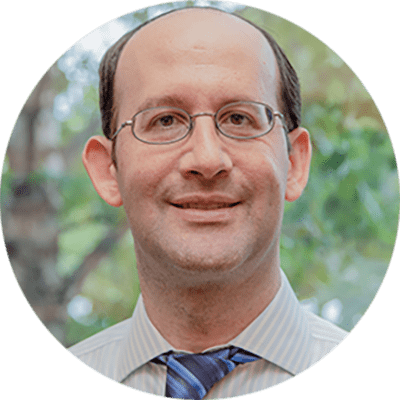
“History of Israel” as History
As the years continue, Israel education now necessarily includes the history of Medinat Yisrael as a larger component than it has in the past. Young students have no memories of the major events in the history of the state, and as time passes, more information, stories, and significant events must be learned in order for students to be able to understand deeply what Israel represents and how its past informs its present. Language, culture, and geography are no longer sufficient for a well-crafted Israel education program.
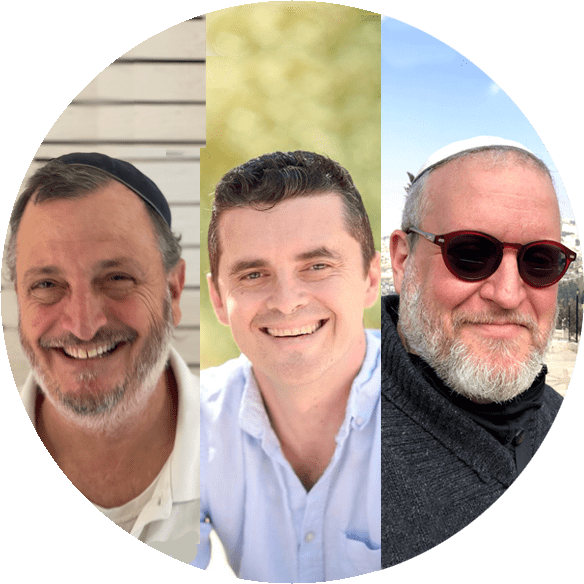
Israel Education in a Post October 7th World
Is being pro-Israel the same as being Zionist? Is the call of the hour advocacy training or education? As Israel educators with decades of experience between us, October 7th forced us to take a hard look at what we teach, and how we teach it. We’ve taught American high school students, Masa gap year and Yeshiva/Seminary students, and visiting college students. We certainly weren’t prepared for this traumatic war, but we will argue that an authentic, classic Zionist approach to Israel education makes more sense now than ever.

Cultivating Respect in Teaching the Arab-Israeli Conflict
Being a Jewish History teacher in a pluralistic Jewish day school, I often find myself up against the question of how we apply the principles of pluralism to the teaching of Israel, and especially the teaching of the “Conflict.” Given that Jewish identity and religious expression are tied to Israel, it is important to help guide students through the fraught path of figuring out the relationship between their emotional connections and the political and social responses to the academic study of Israel. But, just as we set out guideposts for the limits of pluralism, it is important to craft boundaries of what is acceptable within our classroom environment. Key to this challenge is helping students understand their identities and how this sense of self shapes the way that student views the historical realities behind these conflicts.
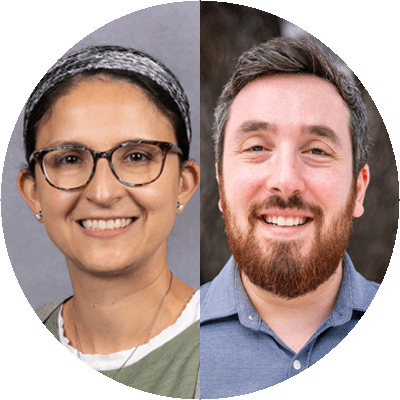
Israel Education For Today’s Generation
For many educators, teaching about Israel has never been so challenging. The emotionally charged nature of the discussion, attitudes on Israel dovetailing with political affiliations, and educators’ fears of facing backlash from parents and the community, are all reasons for why teachers are reluctant to address Israel in the classroom. This is further complicated when considering the generational gap surrounding Israel in our communities. While previous generations saw Israel as the country of miracles and the underdog in the Arab-Israeli conflict, many in the younger generation see Israel as the aggressor in the Israeli-Palestinian conflict and feel conflicted over support for Israel.

Middle School Israel Advocacy
Yavneh Academy, in Paramus, New Jersey, is a Modern Orthodox, staunchly Zionist, preK-8 Jewish day school. Its mission statement includes: “Establishing the centrality of the State of Israel in the life of our school and in the lives of our children and imbuing each child with a connection to the State of Israel as an essential part of his/her identity.” Yavneh has always held true to its mission statement. It has seamlessly woven the study of Israel into much of its curriculum. Students learn Hebrew in every grade, including pre-K. They are exposed to Judaic texts and maps to connect history to the present-day land.
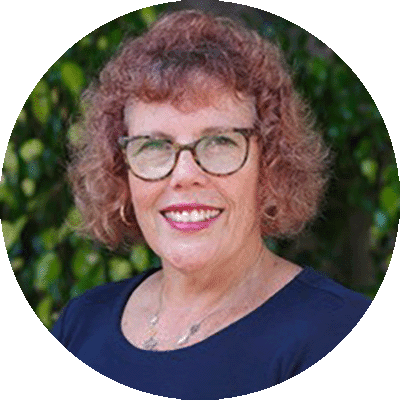
A Shared Student and Teacher Approach at Learning About Israel
The first aspect of helping my students this year was to create a safe, open, and accepting environment in the classroom to allow students to share their fears, questions, and thoughts. I have learned over many years of teaching that students desire to be heard and validated. They are seeking to be heard, much more than they are seeking actual answers to their thoughts and (philosophical) questions. I have learned over the years to listen and understand them.
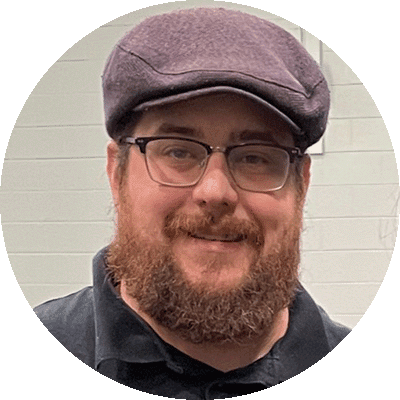
Preparing Students For Their Encounter With Broader Society
Long before October 7th, as a teacher with a Social Studies background, I have been working with my administration team and the Center for Israel Education to revamp our Israel curriculum. My instinct was to bring Israel education from a place of chronological progression of events to finding touch points with other historical events outside of our people and land, helping to anchor historical periods in students’ minds. This approach mixed with modern culture and current events, should give students a broad and basic foundation of understanding that culminates in our annual 8th grade trip to Israel.
Reach 10,000 Jewish educational professionals. Advertise in the upcoming issue of Jewish Educational Leadership.






